Most glaciers in the Alps have receded several kilometers over the past century. But glaciers which are covered by a thick layer of debris have not melted so much, like the Glacier du Miage.
In area’s with steep, eroding mountains many rocks fall down on the glacier. This debris insulates the ice and decreases melt in summer significantly. It’s no coincidence that the best known examples of such glaciers are located beneath the slopes of two of the highest mountains in the Alps, where ample debris falls down. The Belvedere Glacier lies at the foot of Monte Rosa and Glacier du Miage starts at the Mont Blanc, top of the Alps.
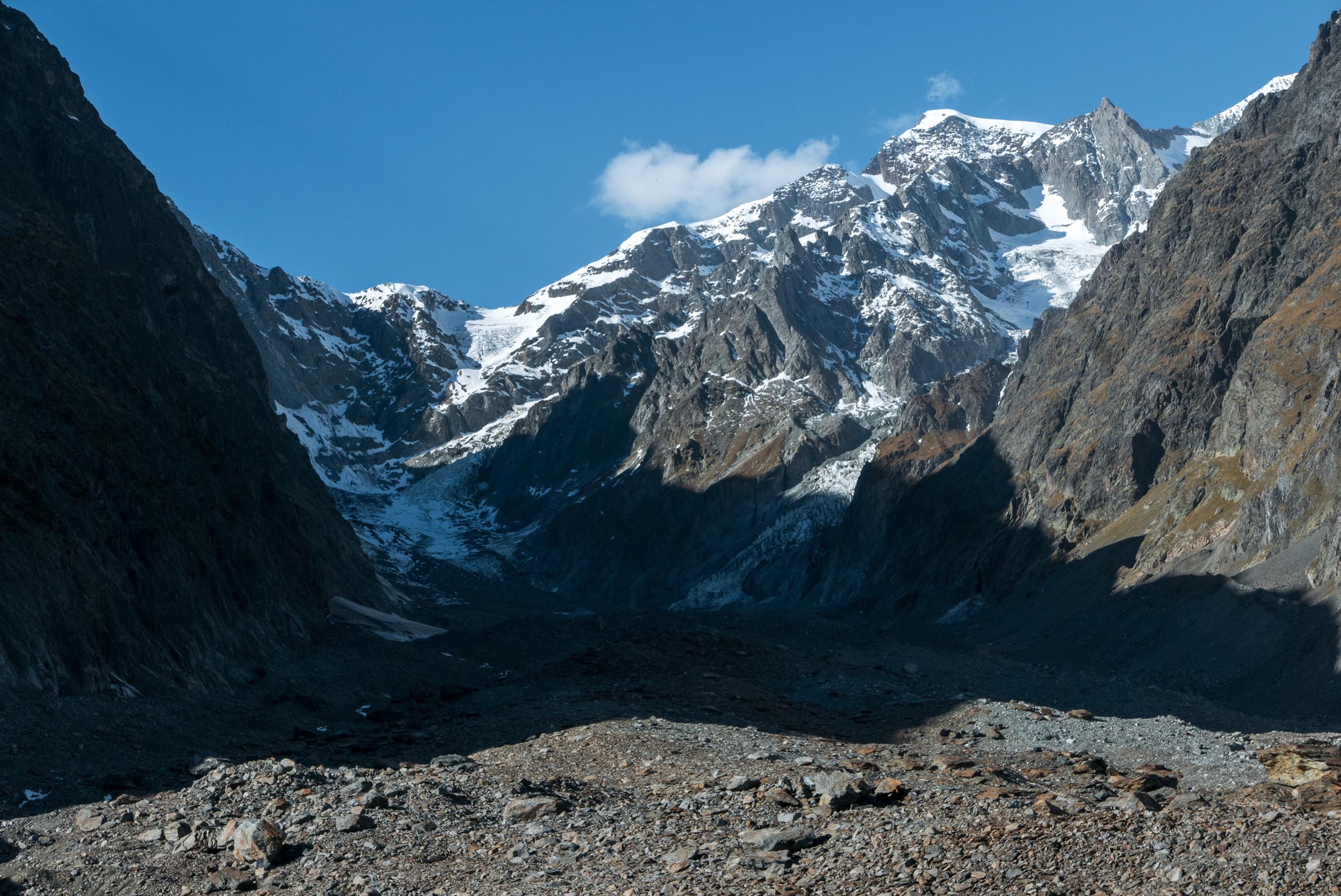
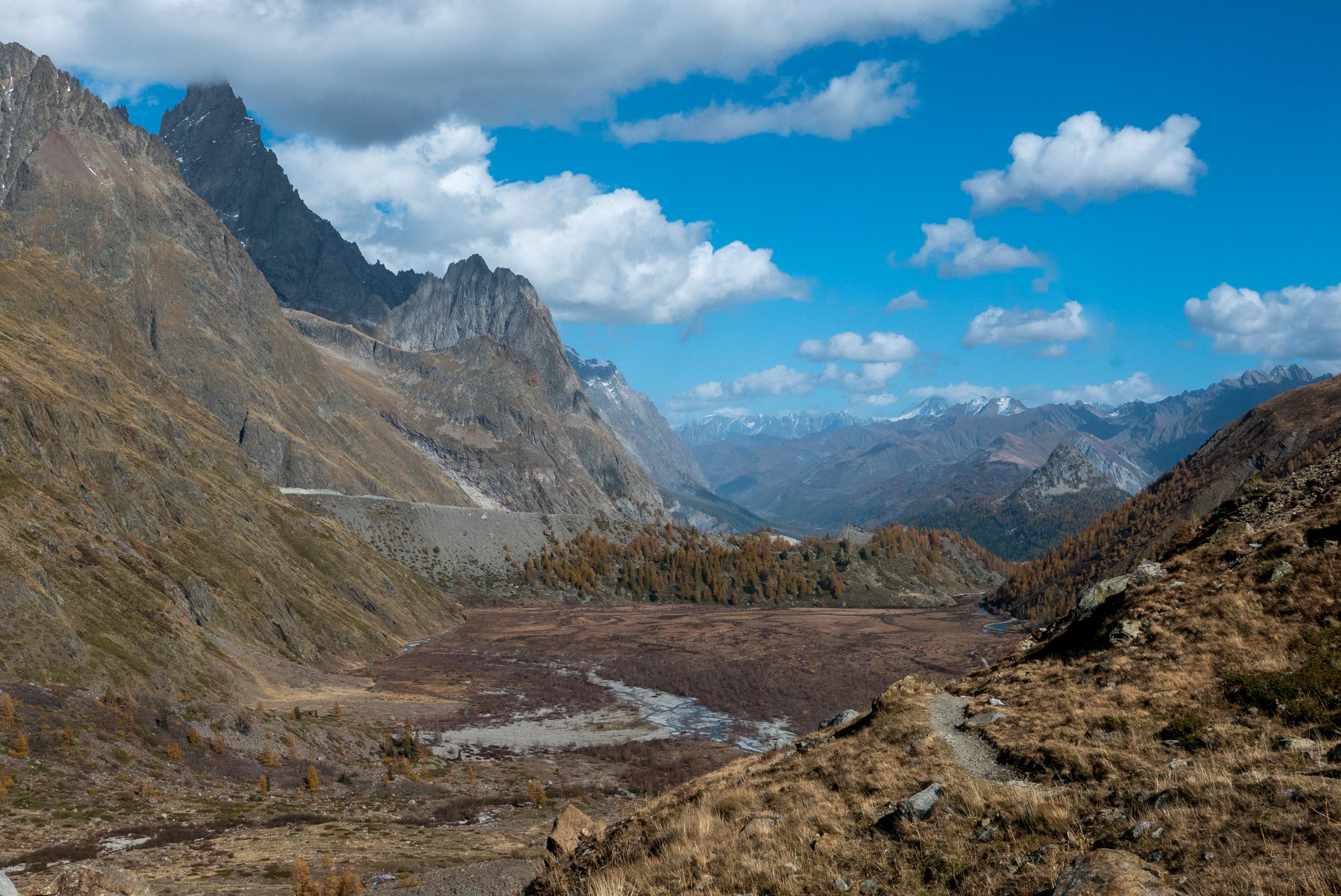
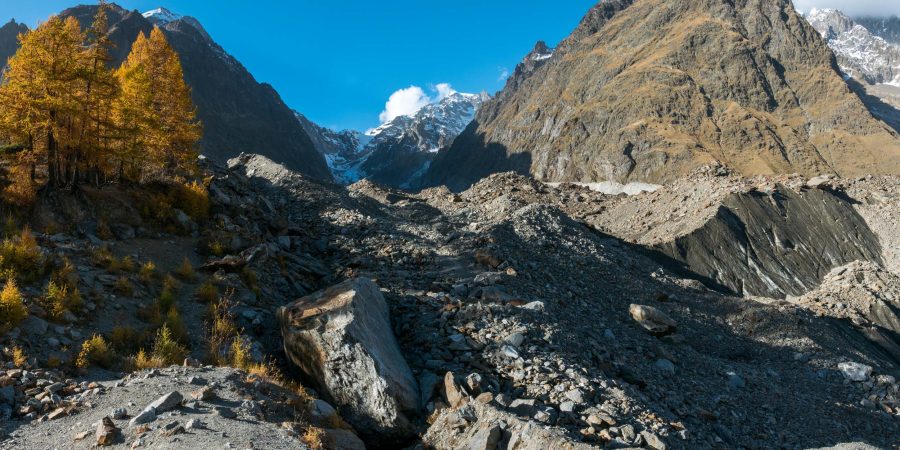
Glacier du Miage is some eight kilometers long and terminates in Vény valley (Val Vény), to the southeast of the Mont Blanc massif. Mountain peaks like Aiguille de Bionnassay, Mont Blanc and Aiguilles de Tré la Tête feed the glacier with both snow and rock avalanches. They transport so much debris to the glacier that rocks cover its entire surface with a thick layer. In the nineteenth century Glacier du Miage was very large, blocking the valley and a river. Upstream from its huge lateral moraines a lake formed, that later disappeared again because of infill with sediments.
After a period of minor recession the glacier advanced again in the 1970’s and 1980’s, becoming just as big as it was in the nineteenth century. A depression between the glacier and its lateral moraine was blocked by the thickening ice and became a lake. The glacier calved into the lake, attracting many tourists. But the spectacle wasn’t without danger: falling ice would create large waves without notice. A particular events washed away dozens of spectators violently from the shores and was caught on tape (youtube).
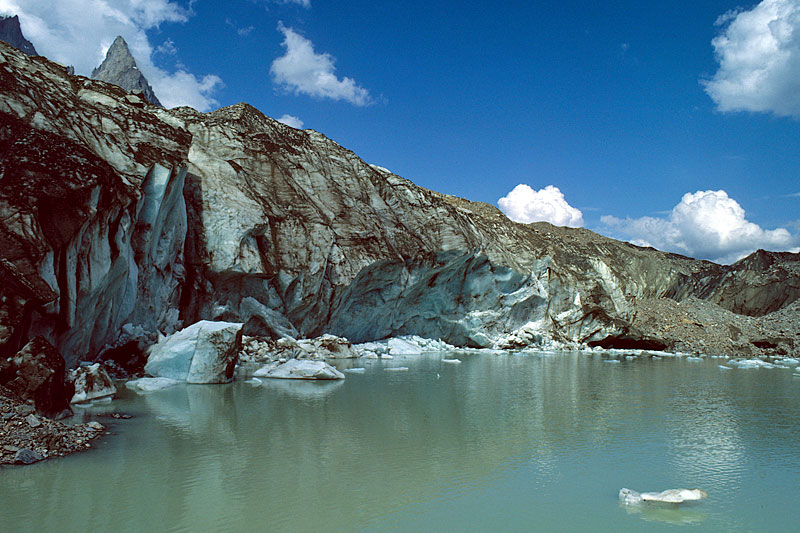
Over the past decades a lot of ice has melted. Besides a little bit shorter, the glacier is mainly downwasting (getting thinner). The lake has become a harmless puddle, as the glacier now lies much lower than the water table. Nonetheless, Glacier du Miage is still relatively close to the (top of the) moraines. And melt rates will stay low compared to other alpine glaciers, because the rocks will keep insulating the glacier. Unfortunately, they more or less conceal the unwavering glacier at the same time.
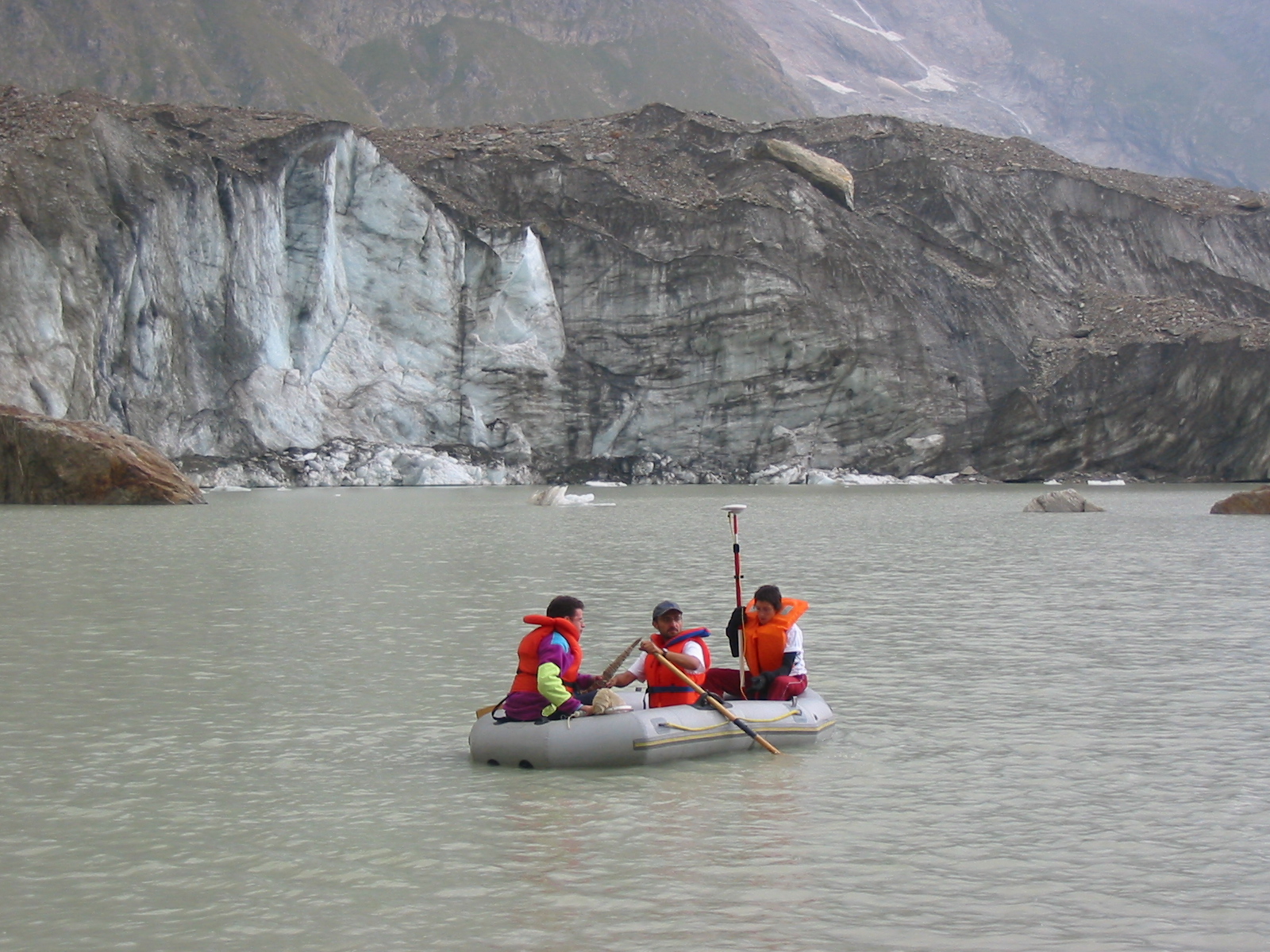
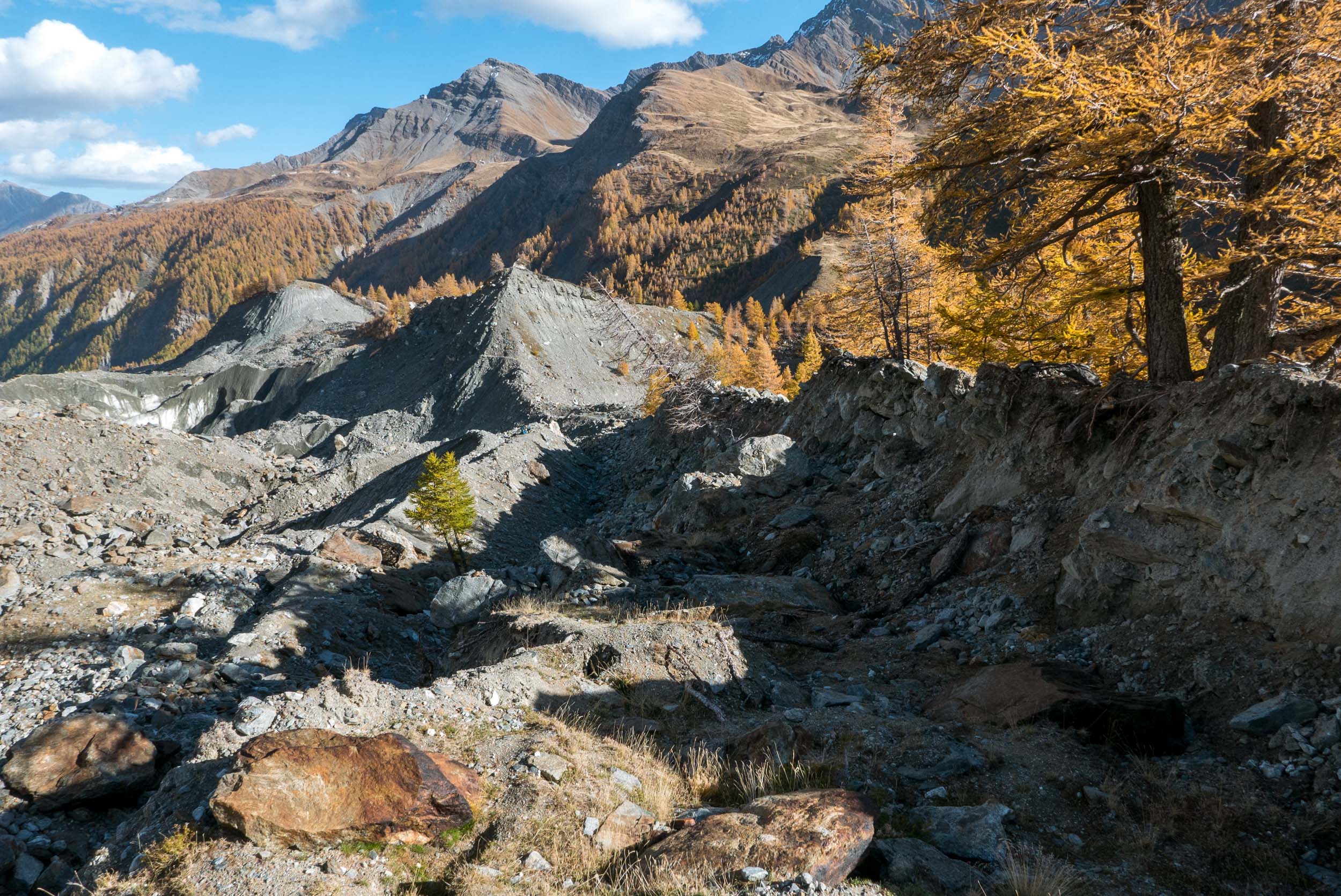
Search within glacierchange: